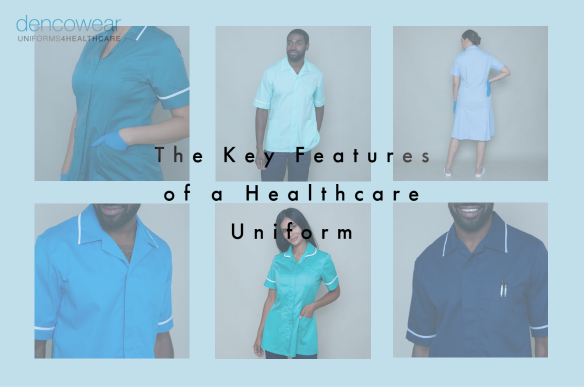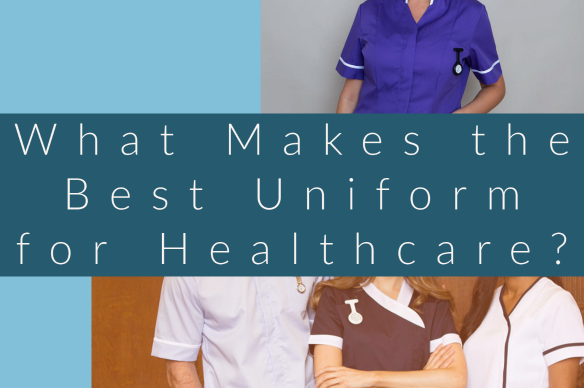
Advice on Finding the Right Uniform for You
Materials and Key Features of Healthcare Uniforms Explained, So You Can Pick Your Perfect Uniform
The uniform of a healthcare worker is more than just a style statement, a reflection of professionalism or the projection of a corporate identity. It is essential in protecting both staff and patients. That is why we at Uniforms for Healthcare take our role in providing uniforms so seriously and why we always endeavor to provide you with healthcare uniforms that are functional, comfortable, and practical. Your uniform choice will be dependent on your specific employer requirements and your particular role, but there are still, usually, some personal decisions you can make. Through this blog post, we wanted to highlight the key things to consider when deciding on your next uniform.
Uniform Requirements
If you work for the NHS, you will already be aware there are general dress codes, that then differ between trust groups and job roles. There are additional restrictions for clinical staff (non-uniform and uniform) but below you can find the general principles for all staff members;
- Uniforms are worn for protection, to portray professionalism and to promote corporate identity
- Hair must be clean, neat and tidy. It should not be brightly coloured and should be worn off the face and collar
- If hair fastenings are worn they must be discreet and plain
- Facial hair should be neat and tidy
- A trust identity badge and name badge must be worn and must be visible
- All footwear worn must be closed in clinical areas, firmly attached to the wearer's foot and low heeled
- Head coverings must be secure and washed daily
- Body piercings must be discreet
- Makeup and jewelry must be discreet
The NHS recommends that when wearing a uniform in a clinical setting, a clean uniform or scrub set should be worn daily. Ideally, uniforms should be washed at 60-degrees but washing at 40-degrees is also acceptable if the uniform is tumble dried or ironed afterwards.
Deciding on a material
It can be confusing when faced with different material options to know which is best for you as each material as different qualities. To help you out, below you can find the materials we supply at Uniforms for Healthcare along with some key information on what each material provides enabling you to make a more informed decision when choosing your next uniform.
Polycotton
A polyester-cotton blend is the material most used in healthcare uniforms, usually with a ratio of 65% polyester to 35% cotton. This material is durable, hard-wearing, and breathable meaning you can be kept cool when working long shifts. It is also easy to care for as it can be machine washed up to 60-degrees and is suitable for industrial laundering. Our Drayford tunic, Blend tunic, Winfell dress and Yorkie healthcare trousers are all available in a polyester-cotton blend as well as most of our scrub sets like the Mawson scrub top and trousers.



Soft-touch Polycotton
Our soft-touch Polycotton gives a slight revamp to traditional polycotton as its made with combed yarns and has a mercerised finish resulting in an extremely comfortable fabric that is lightweight and soft to the touch. Its composition is still 65% polyester and 35% cotton so the hard-wearing and durable properties of traditional poly-cotton remain. Our Sandringham scrub tops and matching Newbury trousers have been created using this material.


4-way stretch
Our 4-way stretch fabric is composed of 96% polyester, 4% elastane. The stretch element to this fabric makes it extremely comfortable and flattering. It is also crease-resistant, so no ironing is required. The Tranquility and Glow tunics, as well as our couture beauty dress, come in this fabric. Moreover, coming soon is our 4-way stretch Oakwood scrub suit, an ideal uniform for those longer shifts.



Our Future Fabrics (Coming very soon!)
At Uniforms for Healthcare we are always on the lookout for new materials that will enable us to excel expectations.
We currently have two very exciting developments, the first being our Keanu stretch fabric. This fabric makes use of thermoregulation technology which works to keep the body at an optimum temperature. The composition is 35% cotton, 40% polyester and 25% cocona. It's stretchy, fast-drying, lightweight and can be industrially laundered. We will be making our, tranquility, the One and chic tunic in this fabric, so keep your eyes peeled on our socials for any updates!



The second exciting development is our use of cotton elastane as a fabric for scrubs. It is a fabric that's soft against the skin and incredibly stretchy so comfortable to wear all day or all night as it doesn't restrict movement. The fabric has all the best qualities of cotton (natural which allows the material to absorb water and “breathe” which makes it cool to wear for long periods of time) as well as the best qualities of elastane (crease resistant and comfortable due to its stretchy properties). See a preview of our cotton elastane scarcroft scrubs below.


Key uniform features to look out for
It is not just the material of the uniform that you need to look out for but also key features contributing to the practicality and comfort of the uniform.
Pockets
This seems a straightforward one but easily forgotten. During hectic long shifts the last thing you want to be worrying about is not having essential items to hand. So depending on your role and therefore requirements definitely be sure to check out how many pockets the tunic, trousers, dress or scrubs your looking at has and if this is enough for what you need. Some of our product, including the Eliza and Brimham tunics, also have loops or pen specific pockets for extra practicality and water poof linings to protect from any potential leakages



Action Backs and vents
In product descriptions you may see references made to single or double action back and vents, these are features added into the uniform to improve the ease of movement. They allow flexibility in its structure so that it moves with you. Some tunics may also have additional features such as a V cut in the sleeves to again provide a non-restrictive



Collar Type
The majority of our uniforms either have a V-neck collar, as seen on our Mawson scrubs, or a round collar, as seen on our legacy tunic , these are non-restrictive allowing you to complete your job with ease. Some products do have a mandarin stand collar. These collars are also non-restrictive and provide a fashion edge.



Fastening
Most healthcare uniforms come with concealed fastenings, as seen on the Harewood tunic, as these give a professional clean look. These can be situated on the front or side of the tunic, which is a preference totally down to you. Some uniforms also have the addition of top stud like the theory tunic. Another fastening you may see is an asymmetric stud fastening like on the Byron dental tunic.



We hope this post has helped you understand the different aspects of a healthcare uniform, to browse our full range visit https://www.uniforms4healthcare.com/ or email us at info@dencowear.co.uk with any questions you may have.


